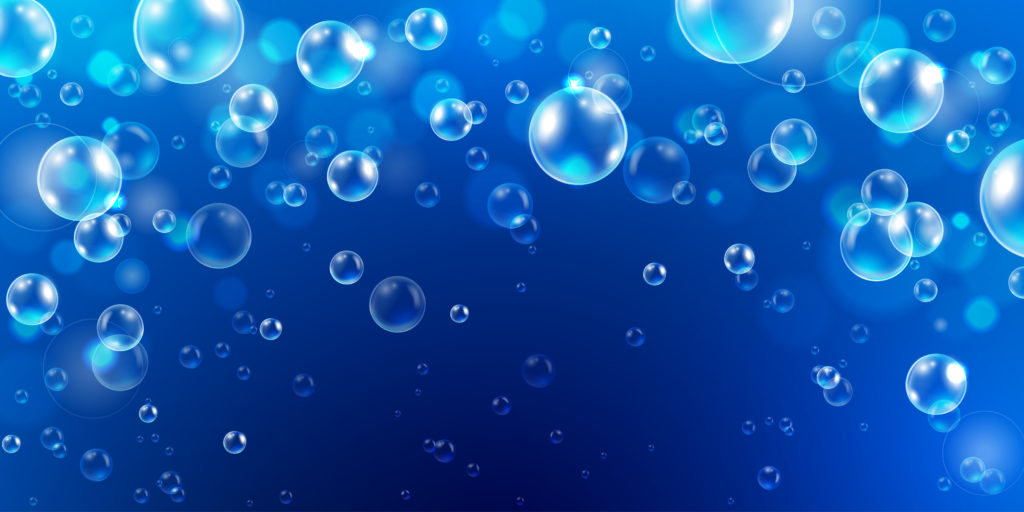Glow in the Dark Water Experiment
Key concepts
Chemistry
Water
Light
Fluorescence
Energy
Ultraviolet light
Background
Tonic water is a carbonated beverage that has a chemical called quinine dissolved in it. Quinine is made from the bark of a tree and has been used for centuries as a treatment for malaria. Quinine not only gives tonic water a characteristic bitter taste (which is offset today by the addition of sweeteners to bottled tonic water) but this chemical can also be very fluorescent under the right conditions.
Under an ultraviolet “black light,” the quinine in tonic water makes the water fluoresce a brilliant, bright blue (even though only a relatively small amount of quinine is dissolved in the water). In general, something fluoresces because it has absorbed light energy, which makes it excited, and then it releases (or emits) light as it returns to its normal, unexcited state. Part of why we find things that glow under ultraviolet lights—such as some minerals, fish and tonic water—to be fascinating is because we cannot see the (ultraviolet) light they absorb but can see the visible light they emit (which is blue in the case of quinine).
Materials
- Tonic water
- Clear, plastic, disposable cup
- Measuring cup (optional)
- Medicine dropper
- Bleach
- Ultraviolet “black light” bulb (This can be purchased at a party supply store or some hardware stores.)
- A room that can be darkened
Preparation
- When handling the bleach, be sure to read and follow all safety precautions listed on the container. Adult assistance is required when handling bleach. Do not drink the bleach or the tonic water mixed with the bleach, and be careful to not get it on your skin.
- Avoid looking directly at the ultraviolet “black light” and shining it on your skin because the light can damage your eyes and skin.
Procedure
- Pour about one cup of tonic water into a clear plastic, disposable cup.
- In a darkened room turn on the ultraviolet black light and shine it on the cup. What happens to the tonic water in the cup when the black light shines on it?
- While still shining the black light on the cup of tonic water, use the medicine dropper to carefully add two drops of bleach to the tonic water. Carefully mix the bleach in with the tonic. What happens when the bleach is added to the tonic? What happens after the bleach is mixed in with it?
- If you do not see a change in the tonic water, try adding and mixing in a few more drops of bleach. What happens?
- If you have some left, under the black light you can compare the glow of the tonic water in the original bottle with the tonic water that has bleach mixed in. Do they look very different? Overall, how did adding bleach to the tonic water change its glow under the black light?
- Extra: If you dilute tonic water with regular water, you can make the tonic water glow less brightly. What is the smallest amount of tonic needed (as you dilute it with normal water) for it to still visibly glow under an ultraviolet black light?
- Extra: Bleach is a type of chemical called an oxidizing agent. Some other common household oxidizing agents include hydrogen peroxide and OxiClean (which contains sodium percarbonate). When other oxidizing agents are added to tonic water, do they have the same effect on its glow under an ultraviolet black light that bleach does?
- Extra: You could try preparing JELL-O with tonic water instead of regular water. Does the JELL-O made with tonic water glow under an ultraviolet black light? (Tip: Try preparing the JELL-O with water that is hot but not quite boiling.)
Observations and results
When you added a few drops of bleach to the tonic water, did it stop fluorescing under the ultraviolet black light?
You should have clearly seen that the tonic water glowed a brilliant, bright blue color when you put it under the ultraviolet black light (before adding bleach). This is because the (invisible) ultraviolet light from the black light is absorbed by the quinine in the tonic water, and this excites the quinine. When the quinine becomes unexcited, it releases visible blue light that we see. After adding and mixing in a few drops of bleach with the tonic water, however, it should have stopped glowing. Why? Bleach is an oxidizing agent and can disrupt and break certain chemical bonds (specifically carbon–carbon double bonds). It is in these chemical bonds that the quinine absorbs the ultraviolet light, so by adding bleach to the tonic water it makes the quinine unable to absorb ultraviolet light anymore, and so it can no longer emit blue light.
Courtesy of Science Buddies




